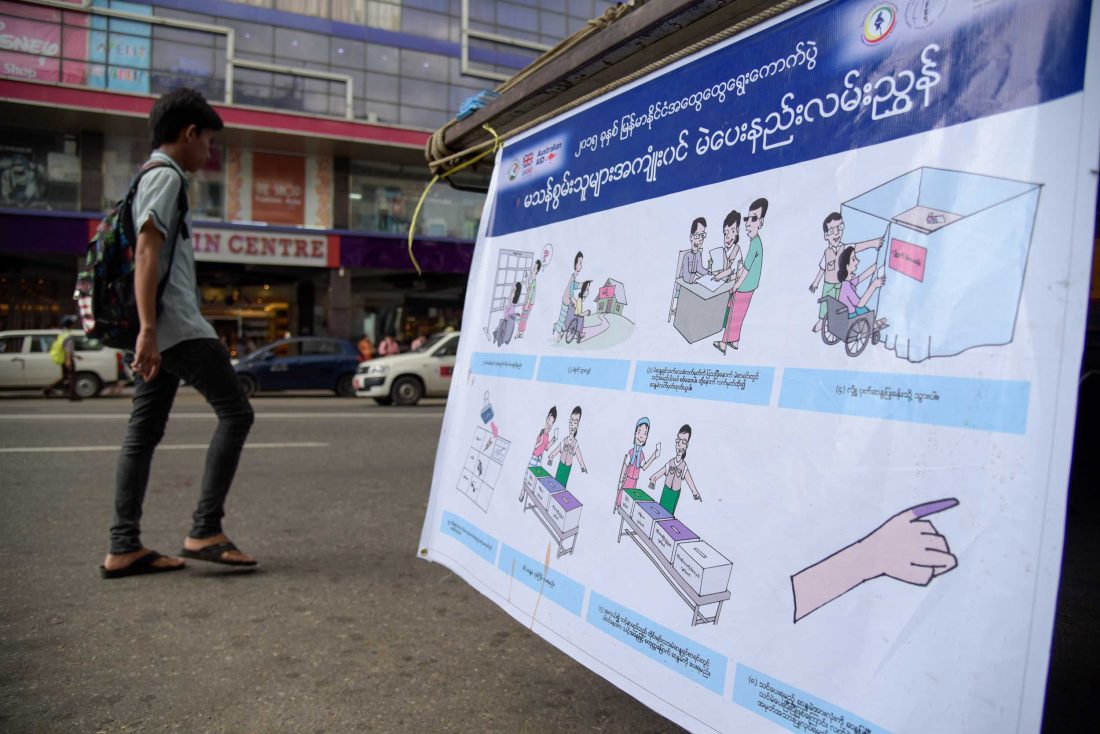
Voter education posters ahead of Myanmar’s historic 2015 election. Photo/Thet Htoo
The elections were largely considered to be a test of the NLD, led by Aung San Suu Kyi, whose party won nearly half of the contested seats. In contrast to the 2015 election, when voting in some areas had to be cancelled due to security concerns, the by-elections were generally peaceful without any major incidents in any of the constituencies.
Nine of the contested seats were in the Lower House, three in the Upper House, and the remaining seven in state and regional assemblies in ethnic minority areas. Ten of the 19 seats were vacant because those parliamentarians took other positions after the 2015 election. The six seats up for grabs in Shan State had been vacant since 2015 as security concerns forced the cancellation of voting there. The remaining three seats were vacant due to the death of the incumbents.
To help improve the process for the 2017 by-elections, the UEC initiated several pre-election institutional changes following the 2015 election. These included increased engagement with sub-commissions in states and regions, more detailed polling station lists and election timeline details announced to the public in advance, and updating voter lists by going door-to-door ahead of election day. Observers were also allowed to monitor the advance voting process.
By-elections everywhere tend to draw fewer voters than do general elections. Compared to Myanmar’s historic 2015 election which had a 69 percent turnout, the voter turnout for the 2017 by-elections was about 37 percent. Nevertheless, the efforts made by the UEC and international and national organizations in support of the by-elections were aimed to continue strengthening the nascent practice of an open and competitive electoral process in Myanmar.
In the end, the ruling party took nine seats (47% of total seats)—three in the Upper House, five in the Lower House, and only one in the Shan State assembly. The NLD claimed a language barrier as the cause of losing seats in regional parliaments in ethnic areas, while others attributed the loss to weak preparation and poor strategy. The former party in power, the Union Solidarity and Development Party (USDP), took one seat in the Lower House and one seat in Shan State assembly. It is the strong showing of the Shan Nationalities League for Democracy (SNLD) that should be noted, however, with the SNLD taking six seats in total, two in the Lower House and four in the Shan State assembly.
Here’s a closer look at the numbers:

Mi Ki Kyaw Myint is The Asia Foundation’s program and operations officer in Myanmar. The views and opinions expressed here are those of the author and not those of The Asia Foundation or its funders.
